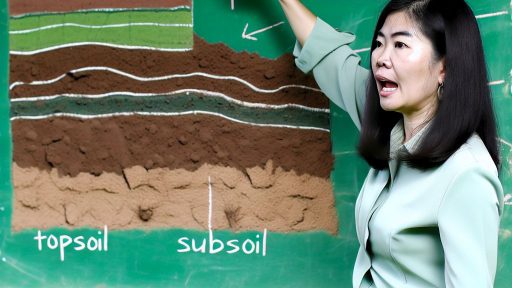Introduction to Agricultural Conservation Programs and Their Importance
Agricultural conservation programs play a crucial role in modern farming.
These programs help farmers adopt sustainable practices.
They assist in protecting natural resources, such as soil and water.
Moreover, these initiatives promote biodiversity and ecosystem health.
They also address the challenges posed by climate change.
Through these programs, farmers receive financial incentives for conservation efforts.
This support helps create a balance between agriculture and environmental stewardship.
Additionally, these programs improve agricultural productivity over time.
Farmers who implement conservation practices often see reduced input costs.
Ultimately, healthy ecosystems lead to resilient agricultural systems.
Understanding these programs is essential for farmers and policymakers alike.
They form a foundation for sustainable agricultural development.
Examining the regulations surrounding these programs is equally important.
Regulations ensure that funds are used effectively and efficiently.
They also help track the impacts of conservation efforts on the environment.
Transform Your Agribusiness
Unlock your farm's potential with expert advice tailored to your needs. Get actionable steps that drive real results.
Get StartedFurthermore, compliance with regulations fosters trust within the community.
A comprehensive understanding of these factors enhances program success.
Overview of Key Regulations Governing Conservation Programs
Introduction to Agricultural Conservation Programs
Agricultural conservation programs support sustainable farming practices.
These programs aim to protect natural resources and promote environmental health.
They often provide financial assistance to farmers implementing conservation practices.
Types of Conservation Programs
Various conservation programs exist under federal and state regulations.
Programs include the Conservation Reserve Program (CRP) and the Environmental Quality Incentives Program (EQIP).
Each program has specific eligibility requirements and funding opportunities.
Federal Regulations Governing Conservation Programs
Federal regulations shape the framework for agricultural conservation programs.
Key authorities include the U.S. Department of Agriculture (USDA) and the Natural Resources Conservation Service (NRCS).
They establish guidelines for funding and implementation of these programs.
State-Level Regulations
States also play a significant role in conservation regulations.
State agencies often administer federal programs and develop local initiatives.
Moreover, state regulations may address specific regional environmental concerns.
Funding Mechanisms for Conservation Initiatives
Funding for conservation programs comes from various sources.
Federal, state, and even local governments provide financial support.
Additionally, private organizations and nonprofits also contribute funds for conservation initiatives.
Compliance and Monitoring Requirements
Compliance plays a crucial role in the success of conservation programs.
Farmers must adhere to specified guidelines and practices to receive funding.
Moreover, regular monitoring ensures the effectiveness of implemented practices.
Challenges in Navigating Regulations
Navigating the landscape of regulations can be complex for farmers.
Farmers often face challenges related to understanding program requirements.
Additionally, changes in regulations may affect existing conservation efforts.
Resources for Farmers Seeking Guidance
Farmers can access numerous resources for navigating regulations.
Showcase Your Farming Business
Publish your professional farming services profile on our blog for a one-time fee of $200 and reach a dedicated audience of farmers and agribusiness owners.
Publish Your ProfileLocal agricultural extensions and state agencies provide valuable assistance.
Furthermore, online platforms and workshops are available to enhance understanding.
Understanding the Application Process for Conservation Programs
Initial Steps for Application
Start by researching available conservation programs in your area.
Identify programs that align with your farming practices and environmental goals.
Gather necessary documentation, including farm maps and conservation plans.
Contact local conservation offices for guidance and resources.
Preparing Your Application
Clearly describe your conservation goals and farming practices.
Use specific data and examples to strengthen your application.
Engage with local agricultural extension services for support.
Ensure your application meets all program eligibility requirements.
Submission and Review Process
Submit your application before the specified deadline.
Keep a copy of your submission for personal records.
Follow up with program administrators to confirm receipt of your application.
Be prepared to answer questions during the review process.
Receiving Feedback and Making Adjustments
Expect feedback from program officials after the review.
Implement any suggested adjustments promptly to improve your application.
Consider reapplying if you receive a denial for funding.
Document any changes made for future reference.
Funding and Implementation
Once accepted, review the funding terms and conditions carefully.
Set up a plan for implementing the conservation practices funded by the program.
Track all expenses and progress throughout the project.
Maintain communication with program officials for ongoing support.
Discover More: The Importance of Food Safety Standards in Agriculture
Eligibility Criteria for Agricultural Conservation Funding
Overview of Agricultural Conservation Programs
Agricultural conservation programs offer funding for sustainable farming practices.
These programs aim to protect natural resources and enhance agricultural productivity.
Understanding eligibility is crucial for farmers seeking financial assistance.
General Eligibility Requirements
Farmers must be actively engaged in agricultural production.
They need to demonstrate compliance with various land stewardship practices.
Additionally, participating farms must meet specific size requirements.
Application Processes
Farmers should start by submitting a detailed application.
This application requires information about their farming operations.
Next, farmers must provide documentation proving compliance with the eligibility criteria.
Types of Eligible Practices
Eligible practices vary based on the specific program.
Common practices include crop rotation, cover cropping, and conserving biodiversity.
Moreover, programs may fund water conservation and erosion control measures.
Financial Limits and Terms
Each program has defined financial assistance limits for eligible practices.
Farmers need to understand the funding cap and repayment terms.
Moreover, they should be aware of any matching fund requirements.
Potential Challenges
Navigating the eligibility criteria can be complex.
Farmers often face challenges when gathering necessary documentation.
Showcase Your Farming Business
Publish your professional farming services profile on our blog for a one-time fee of $200 and reach a dedicated audience of farmers and agribusiness owners.
Publish Your ProfileAdditionally, understanding program updates is essential for compliance.
Resources for Assistance
Farmers can access various resources for help with applications.
Local agricultural extension offices often provide valuable guidance.
Furthermore, non-profit organizations may offer technical assistance.
Learn More: Enhancing Farm Operations Through Animal Welfare Compliance
Best Practices for Compliance with Regulatory Requirements
Understanding Regulatory Frameworks
Each agricultural conservation program has specific regulations.
Familiarize yourself with these requirements early on.
This knowledge enables effective planning and implementation.
Document Everything
Maintain accurate records of all activities and practices.
Documentation shows compliance and supports operation audits.
Ensure all records are organized and easily accessible.
Use digital tools to streamline record-keeping processes.
Engage with Experts
Consult with agricultural specialists or legal experts regularly.
These professionals can provide valuable insights.
They help navigate complex regulations effectively.
Consider forming partnerships with local agricultural agencies.
Regular Training and Workshops
Participate in training sessions to stay updated.
Workshops offer education on recent developments and practices.
Encourage team members to attend relevant trainings.
Knowledge sharing enhances compliance across the board.
Utilize Available Resources
Freely access government agency resources and guidelines.
Many organizations provide tools for compliance assessments.
Regularly check for updates on regulatory changes.
Utilizing resources ensures you remain compliant.
Implement Best Management Practices
Follow best management practices tailored to your operations.
These practices minimize environmental impact while maximizing efficiency.
Continuous improvement leads to better compliance outcomes.
Monitor Compliance Regularly
Conduct regular self-assessments of compliance initiatives.
Identifying gaps allows you to address issues proactively.
Utilize checklists to ensure thorough monitoring.
Regular reviews foster a culture of accountability.
Stay Informed on Policy Changes
Keep abreast of changes in agricultural policy and regulations.
Subscribe to newsletters or join relevant associations.
Engagement in discussions can provide critical insights.
Proactive adaptation is key to maintaining compliance.
Find Out More: Understanding Food Safety Standards for Modern Farmers
Navigating Federal vs. State Regulations in Conservation Efforts
Understanding the Regulatory Landscape
Conservation programs operate under various federal and state regulations.
These regulations often address environmental protection and resource management.
Both levels of government aim to promote sustainable agricultural practices.
However, their priorities and enforcement mechanisms can differ significantly.
Showcase Your Farming Business
Publish your professional farming services profile on our blog for a one-time fee of $200 and reach a dedicated audience of farmers and agribusiness owners.
Publish Your ProfileFederal Regulations: A Broad Framework
At the federal level, agencies like the USDA set overarching policies.
The Farm Bill is a primary piece of legislation guiding conservation funding.
It provides significant financial support to farmers adopting sustainable practices.
These programs focus on soil health, water quality, and habitat preservation.
State Regulations: Tailoring to Local Needs
State regulations often complement federal guidelines but can vary widely.
Each state addresses specific local environmental challenges and agricultural needs.
For instance, states may create unique programs targeting water conservation.
These local initiatives can supplement federal efforts effectively.
Compliance Challenges for Farmers
Navigating these regulations can be daunting for farmers.
They must stay informed about both federal and state compliance requirements.
Lack of awareness can lead to misunderstandings and potential penalties.
Farmers sometimes rely on consultants to help them interpret these regulations.
Best Practices for Navigating Regulations
Education is crucial to understanding regulatory frameworks.
Farmers should attend workshops and training sessions on conservation programs.
Engagement with local agricultural extension services can provide valuable insights.
Additionally, forming alliances with other farmers can foster knowledge sharing.
The Role of Technology in Compliance
Technology can simplify compliance with agricultural regulations.
Farm management software helps track conservation practices and progress.
Some platforms offer real-time data analysis for efficient resource use.
Moreover, technology enhances communication with regulatory bodies.
Impact of Regulations on Conservation Programs
Understanding federal versus state regulations is vital for successful conservation.
Farmers who navigate these regulations effectively can enhance their sustainability efforts.
Ultimately, these efforts contribute to healthier ecosystems and thriving communities.
Explore Further: The Role Of Tariffs In Shaping Agricultural Markets Globally

Case Studies: Successful Implementation of Conservation Practices
Successful Agroforestry in Wisconsin
A farmer named Tom Richards implemented agroforestry techniques on his land.
He integrated trees and crops to enhance biodiversity.
As a result, he observed improved soil health and water retention.
This method also provided additional income through timber sales.
Restoration of Wetlands in Florida
A project led by the Everglades Restoration Team focused on wetland restoration.
The initiative aimed to improve water quality in the region.
Through targeted conservation practices, they restored over 5,000 acres of wetlands.
This effort has positively influenced local wildlife habitats.
Cover Crops in Iowa
A group of farmers in Iowa adopted cover cropping strategies.
They planted cover crops to prevent soil erosion during the winter months.
Consequently, they found a significant increase in soil organic matter.
This practice also reduced nutrient runoff into local waterways.
Crop Rotation Benefits in California
A family farm in Central Valley implemented a crop rotation system.
This approach diversified their production and improved soil fertility.
They noticed a decrease in pest pressures, reducing the need for chemicals.
Additionally, this strategy enhanced their resilience to climate variability.
Showcase Your Farming Business
Publish your professional farming services profile on our blog for a one-time fee of $200 and reach a dedicated audience of farmers and agribusiness owners.
Publish Your ProfileCommunity-Supported Agriculture in Oregon
Community-supported agriculture (CSA) programs thrived in Oregon.
These initiatives connect local farmers with consumers directly.
The participants commit to purchasing seasonal produce in advance.
This system promotes sustainable agricultural practices and local economies.
Resources and Support for Farmers in Understanding Regulations
Government Agencies
Farmers can access resources through various government agencies.
The United States Department of Agriculture (USDA) offers comprehensive guidance.
Farm Service Agency (FSA) offices provide local support and regulation updates.
Additionally, state departments of agriculture have valuable information.
Nonprofit Organizations
Numerous nonprofit organizations assist farmers navigating regulations.
The National Sustainable Agriculture Coalition offers resources tailored for farmers.
Local conservation districts often conduct workshops and provide information.
Moreover, organizations like the Soil and Water Conservation Society promote best practices.
Educational Programs and Workshops
Farmers benefit from educational programs addressing regulatory compliance.
Many universities offer continuing education courses on agricultural laws.
Local workshops can equip farmers with the necessary skills and knowledge.
Additionally, webinars provide flexible learning opportunities from home.
Online Resources
The internet hosts a plethora of information on agricultural regulations.
Websites like USDA are crucial for updated regulatory guidance.
Online forums and discussion groups allow farmers to share experiences.
Social media platforms can also facilitate access to current topics and resources.
Consulting Services
Some farmers may choose to hire consultants for professional advice.
These experts bring specialized knowledge on compliance and sustainability.
Consulting services can save time and ensure adherence to regulations.
Furthermore, they often provide tailored solutions for unique farming operations.
Future Trends in Agricultural Conservation Regulations and Policies
Emphasis on Climate Resilience
Future regulations will prioritize climate-resilient agricultural practices.
This focus will help farmers adapt to changing environmental conditions.
In particular, policies will promote crop rotations that enhance soil health.
Additionally, innovations in drought-resistant crops will gain support.
Integration of Technology
Technological advancements will play a crucial role in conservation efforts.
Precision agriculture can optimize resource use and minimize waste.
Farmers will employ data analytics to monitor environmental impacts.
Furthermore, drones and sensors will aid in effective land management.
Collaboration with Local Communities
Future policies will encourage collaboration between farmers and local stakeholders.
This collaborative approach will enhance conservation outcomes.
Community-based initiatives can foster better resource management.
Moreover, knowledge sharing will lead to innovative conservation strategies.
Increased Funding and Incentives
In the coming years, funding for conservation programs will likely increase.
Government incentives will motivate farmers to adopt sustainable practices.
Financial assistance will support the transition to eco-friendly techniques.
Ultimately, these investments will enhance agricultural productivity.
Showcase Your Farming Business
Publish your professional farming services profile on our blog for a one-time fee of $200 and reach a dedicated audience of farmers and agribusiness owners.
Publish Your ProfileFocus on Biodiversity Conservation
Future regulations will prioritize biodiversity in agricultural landscapes.
Farmers will receive incentives to preserve natural habitats on their land.
Policies will encourage the planting of native species and hedgerows.
These actions will promote ecological balance within farming systems.
Enhanced Education and Training Programs
Education will be a cornerstone of evolving conservation efforts.
Farmers will benefit from training programs on sustainable practices.
Workshops will focus on integrating conservation into daily operations.
Furthermore, educational resources will remain accessible online.




